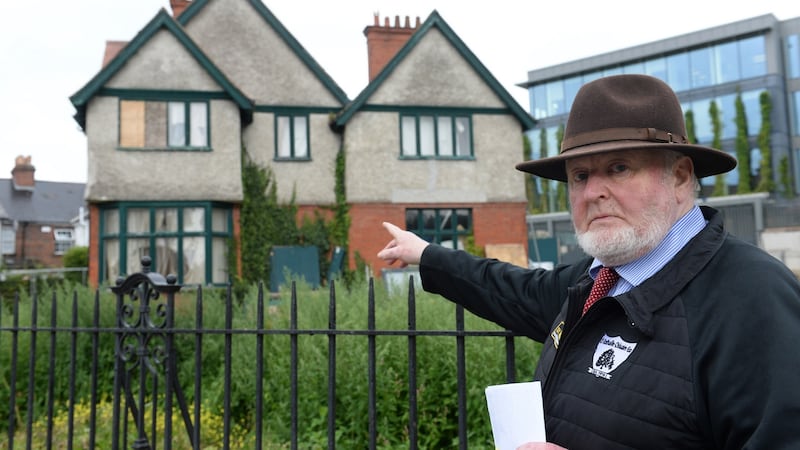The O’Rahilly home in Herbert Park, Dublin should not have been demolished Taoiseach Micheal Martin has told the Dáil.
Early on Tuesday morning work began on the demolition of 40 Herbert Park, Ballsbridge, the former home of The O’Rahilly, the only leader to have been killed fighting during the 1916 Rising. The demolition is to make way for an apartment and hotel development of up to 12 storeys.
Mr Martin said “iconic and historic locations such as this should be preserved or at a minimum incorporated into any new developments”.

He told Aontu TD Peadar Toibin “I don’t believe that buildings of this historic value should be demolished in such a manner”.
Derryroe Ltd, a development company owned by the McSharry and Kennedy families, which also owns the Herbert Park Hotel, had applied to An Bord Pleanala under the Strategic Housing Initiative, for the aparthotel extension and 105 apartments fronting on to Herbert Park.
The development was approved by the board despite objections from Dublin City Councillors, local residents, 1916 relatives and the O’Rahilly’s grandson Proinsias Ó Rathaille.
Mr Toibin asked “why wasn’t there one Minister to stand up for that building before it was demolished”.
Mr Martin said there had been exhaustive discussions involving TDs and Senators about Moore Street, a key location in the 1916 Rising with a conclusion that “I think could enable the derelictions to end, the locations to be restored in an historically appropriate way and development to occur as well.
“It took a long time in terms of Moore Street and I think something similar should have happened here in my view.
Mr Toibin said “today that building lies in rubble. In a shocking act of cultural vandalism at 6.30 this morning against the motion passed by Dublin City Council with regards listing that particular building, the developer demolished it.”

The O’Rahilly’s home was the location of much of the planning and development during the 1916 revolutionary period, he said.
He said that the Asgard gun running was organised there along with a lot of the events in the 1916 Rising and Cumann na mBan was founded there.
Numbers 36 and 38 have already been demolished but several houses of similar vintage and style at numbers 1-34 Herbert Park are included on Dublin City Council’s Record of Protected Structures.
Dublin City Councillor Deirdre Conroy who opposed the demolition of the O’Rahilly house said it would certainly have hosted planning meetings for the 1916 rebellion, and she could not understand how it had not been listed for preservation.
She said the demolition of The O’Rahilly House was comparable to the authorities in the Netherlands potentially permitting “the demolition of the Anne Frank house on the grounds that it was only a terraced house.”
Sinn Féin TD Aengus Ó Snodaigh described the demolition as “a wanton act of vandalism on our culture and historical heritage”.
An Taisce, the national heritage body told the planning board the house has historic and social significance due to the historic association with Michael Joseph O’Rahilly.
The An Taisce Top Ten buildings at Risk in Ireland 2020 list published this July, included two in Dublin, the Iveagh Markets, a former indoor market building in the Liberties in Dublin 8 and the The House by the Churchyard, in Chapilizod, Dublin 20.
In his online publication The Irish Aesthete the architectural historian Robert O’Byrne notes : “This is the eponymous House by the Churchyard, standing – just about – outside the gates of the adjacent St Laurence’s Church” which gave its name to Sheridan Le Fanu’s novel. It is believed to date from about 1740.










